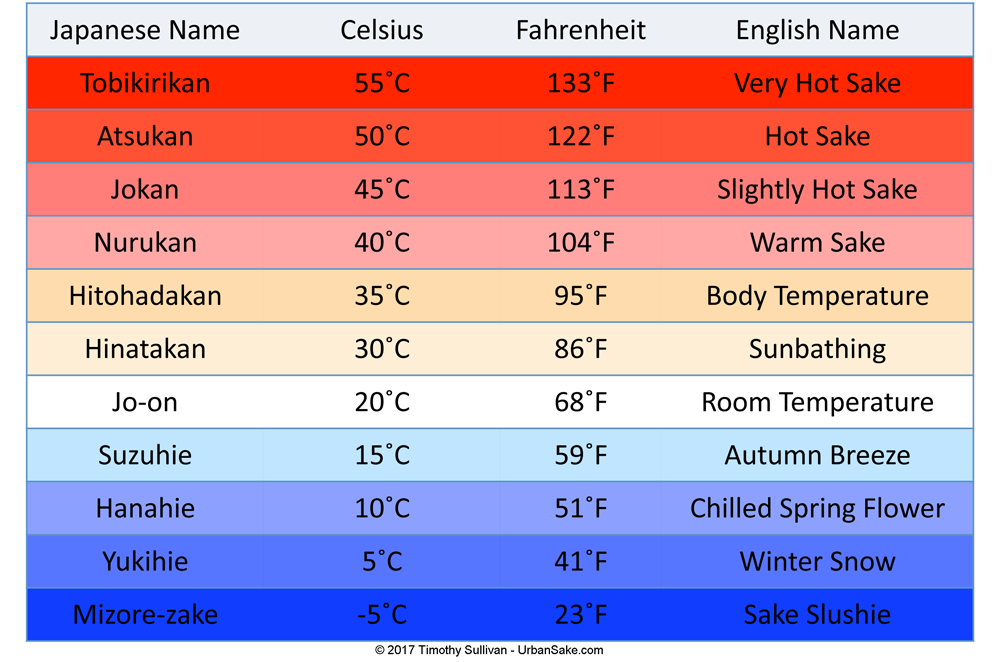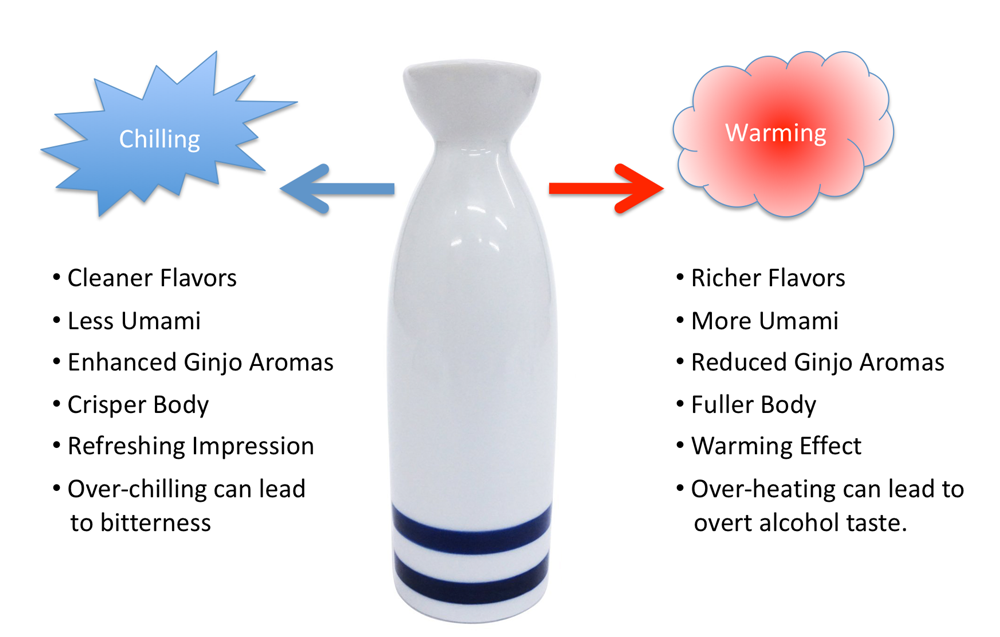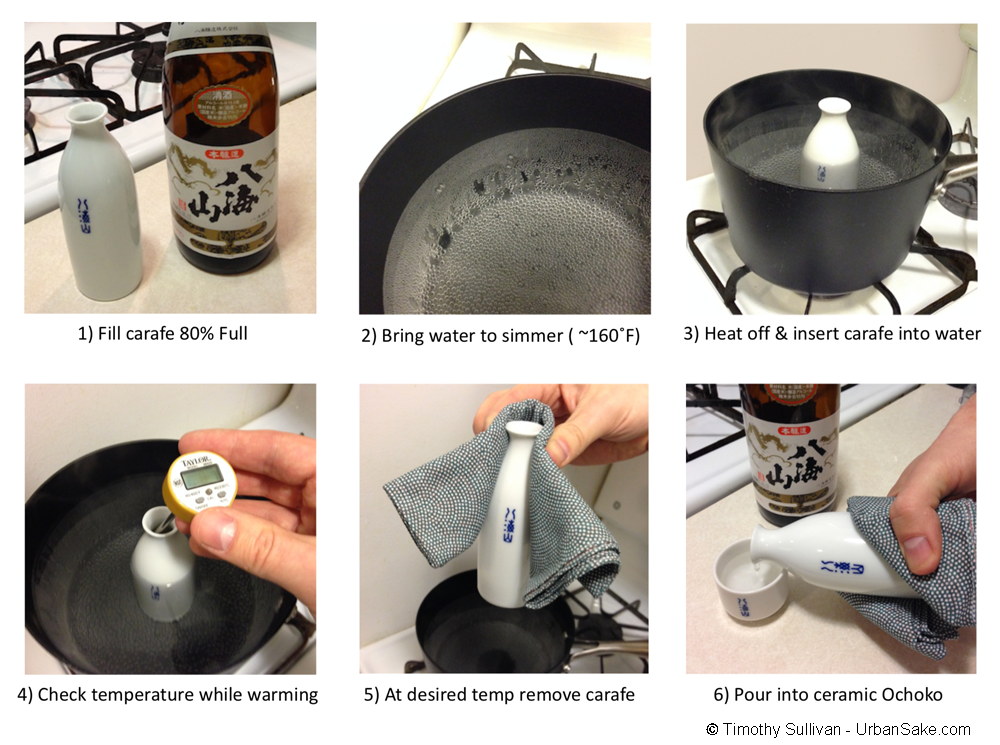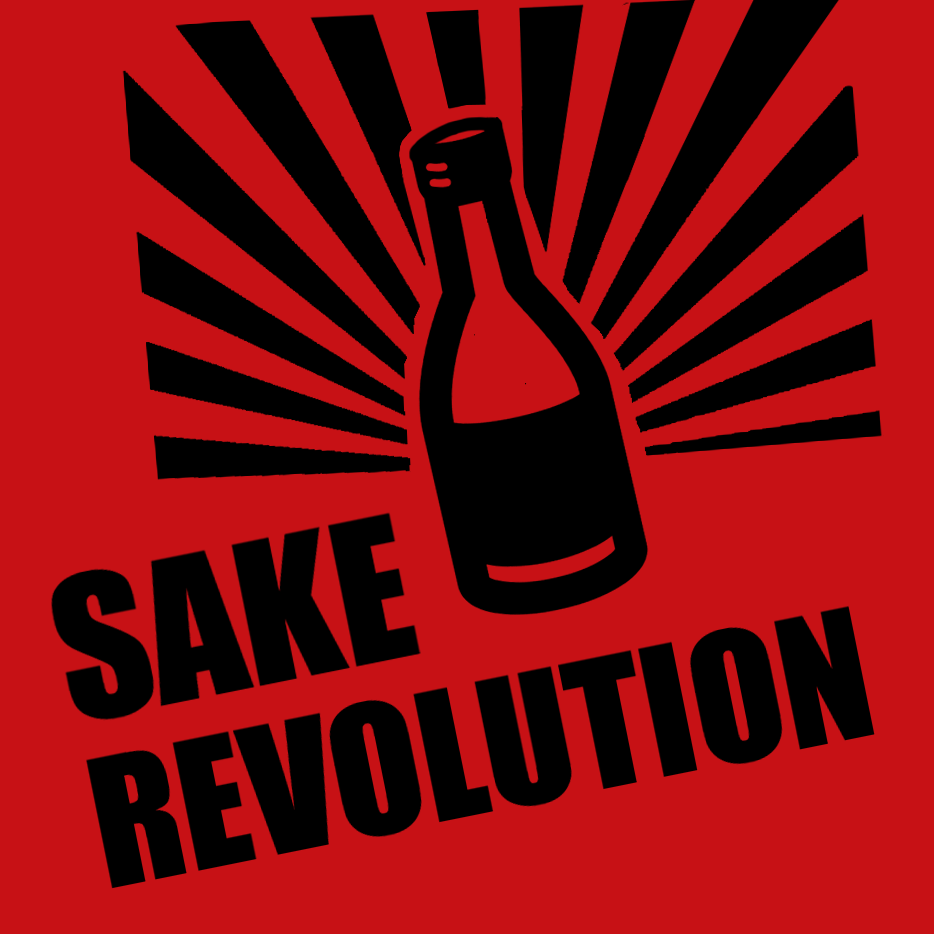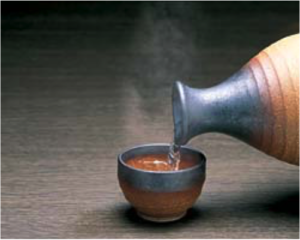
Its Getting Hot in Here!
Few topics in the world of sake elicit stronger feelings and opinions than those regarding sake temperature. Arguments about sake temperature sure can get heated! (ha!) To start off, let’s take a look at a few common ideas about sake temperature.
Tell me if you’ve heard this before? [please say this in your best Thurston Howell III voice] “Premium sakes are only served chilled” or “Only cheap sakes are served warm“. I’m here to tell you both statements are false!
Premium sake can indeed be served warm, often to very delicious effect. It is true however, that warming is not an ideal match for every sake. So how do you know when to warm or what temperature to choose? Here are some general rules of thumb that may help.
- Check your Aroma. Smell your sake! Generally, fruity or floral sakes are good candidates for serving chilled. The specific esters that give us fruity aromas will dissipate at warmer temperatures. Sakes that have more earthy or rice-driven aromas will come out more when a sake is warmed.
- Flavors are Key. Sakes that have, a more full bodied earthy, rice-y or grain-y flavors are generally a good fit for warming. Warming sake enhances ‘umami’ flavors in these types of flavor profiles. If you want to highlight rice-y flavors, don’t warm the sake too high – gentle warming is best.
- Dry Can Go High. Sakes that are very dry (cho-karakuchi) and more clean tasting are also good candidates for warming to higher temperatures. Very dry and clean sakes already have an alcohol-forward flavor, so warming to higher temperatures enhances their intrinsic character.
Please check out the charts and diagrams below for more information on warming sake!
Sake Temperatures
This chart shows you the ranges of sake temperatures and their names. This chart is useful when considering a target temperature for warming or chilling a sake. Generally speaking, heating sake to above 133˚F (55˚C) is not recommended as the alcohol taste becomes too overt and the sake becomes dangerously hot. Use a digital thermometer and test out different temperatures to find what you like!
The Effect of Temperature on Sake
This diagram shows you some general ways that temperature can effect sake. In general warming sake gives you a richer body with more umami and savory flavors. Chilling sake however can give you a crisper, cleaner body with heightened ginjo aromas (melon, banana etc). Again, the name of the game is to experiment with temperature and find what you like.
How to Warm Sake
It may seem like a challenge to warm sake at home, but it is quite easy and fun once you get the hang of it. After you’ve had some delicious warm sake at home, you’ll want to try this again and again during the colder months. If you don’t have a tokkuri sake carafe, any food safe ceramic or earthenware container could work – I’ve even used a coffee mug in a pinch. Experiment and have fun!

